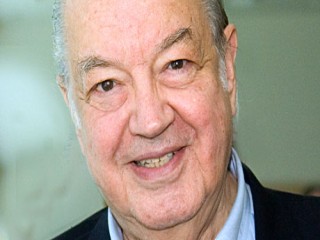
Paul Baran biography
Date of birth : -
Date of death : -
Birthplace : Grodno, Poland
Nationality : American
Category : Science and Technology
Last modified : 2011-10-07
Credited as : Computer engineer, Technician, Packet Switching
0 votes so far
American computer engineer Paul Baran worked as a technician at Eckert-Mauchly Computer Company, on the project that developed the Universal Automatic Computer (UNIVAC), the first commercial computer. Concerned about defending American computers from a possible Soviet attack, he proposed a computer design with built-in redundancy, to mimic how the brain can sometimes recover from injuries by bypassing a damaged region. Furthering that concept, he laid out the principles of a distributed network - a centralized computer system could be rendered useless if the main hub was damaged or destroyed, but a distributed network, with myriad and varied interconnections between individual stations, could withstand attack by redirecting communications to link a network's surviving computers across different lines.
Paul Baran was born in Grodno, Poland (which is now in Belarus) on April 29, 1926. He was the youngest of three children in a Jewish family, with the Yiddish given name "Pesach". His family moved to the United States on May 11, 1928, settling in Boston and later in Philadelphia, where his father, Morris "Moshe" Baran (1884-1979), opened a grocery store. He graduated from Drexel University in 1949 (then called Drexel Institute of Technology), with a degree in electrical engineering. He then joined the Eckert-Mauchly Computer Company, where he did technical work on UNIVAC models, the first brand of commercial computers in the USA. In 1955 he married Evelyn Murphy, moved to Los Angeles, and worked for Hughes Aircraft on radar systems. He obtained his Masters degree in engineering from UCLA in 1959, with advisor Gerald Estrin while taking night classes. His thesis was on character recognition.
In 1961 he first proposed a system now called packet sharing, wherein data would be divided into "message blocks" prior to transmission, and sent block-by-block instead of in one piece. As each block is received at any given node in the system, it is briefly stored as a computer determines the optimal route to forward it to its destination and almost instantly transmits it along. Baran said years later that the immediate response by his superiors at RAND Corporation was, "The kid's crazy. It couldn't possibly work", but packet sharing offers the advantage of maximizing the use of limited transmission routes, making a much more efficient use of bandwidth. It was the basis for the transmission system adopted a few years later as Larry Roberts laid out the structure of the Advanced Research Projects Agency Network (ARPANET), forerunner to today's internet.
Packet switching was also developed independently by American engineer Leonard Kleinrock, almost concurrently, and by English engineer Donald Davies, some years later.
















